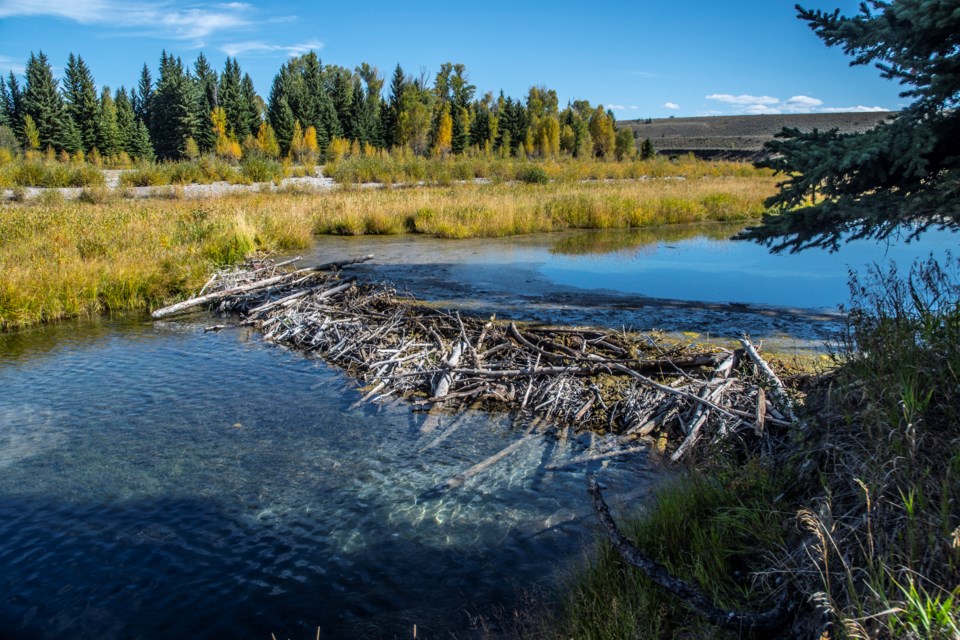As British Columbians gear up for summer, many are worried about B.C.’s water.
The province’s watersheds face “potentially critical water shortages” in 2024, the B.C. Energy Regulator announced in a January bulletin. Weeks later, B.C. Premier David Eby told reporters he was “really worried about the summer that’s coming up,” with conditions raising concerns about “some of the most dramatic drought conditions that have been seen in our lifetime.”
Just this month, the May 1 report on B.C.’s snowpack said the province is averaging 66 per cent of normal. Last year, the average was 91 per cent. April's report called the 2024 snowpack the “lowest snowpack on record since 1970, at least.”
A healthy snowpack is crucial for a hydrated ecosystem. Ideally, the snowpack builds up in the mountains during the winter and then gradually melts over the spring, steadily filling rivers and aquifers for months. A depleted snowpack in April and May is a worrying predictor of a dry summer ahead.
These grim projections of B.C.’s arid future raise a commonly asked, and understandable, question: How could drought be a problem – let alone a perennial one – in a province that gets as much rain and snow as British Columbia?
A considerable amount of precipitation over a year doesn’t mean water is available when and where it’s needed.
So, can B.C. do a better job of storing seasonal water?
The B.C. government seems to appreciate the importance of this challenge with its earmarking of $80 million in this year’s budget for agricultural water infrastructure, which includes water storage.
And we have some ideas about water storage that would support the province’s efforts to address this issue. Ducks Unlimited Canada is dedicated to the conservation and management of wetlands, and owns or manages more than 600 dams in B.C. alone. By our calculations, we believe that makes us the single largest holder of water-storage licences in the province.
The backstory on how our wetland-focused charity became B.C.’s largest owner of water-storage infrastructure dates back more than 50 years, when Ducks Unlimited Canada began entering into partnerships with private landowners and with the B.C. provincial government. Often, these projects were collaborations between Ducks Unlimited Canada, which sought wetland habitat for waterfowl, and ranchers and farmers looking for reliable irrigation and water for livestock.
When you hear the word “dam,” you might envision mega-structures like the 90-metre-tall concrete Cleveland Dam in North Vancouver, which holds back the Capilano reservoir that provides drinking water for much of Metro Vancouver’s population. Or the even larger W.A.C. Bennett Dam in northeastern B.C., a 183-metre-high and 2,000-metre-long behemoth that controls one of the world’s largest reservoirs by volume.
By comparison, most of the dams and water-storage structures managed and owned by Ducks Unlimited Canada are much smaller and built with little or no concrete.
These structures are earthen dams, between one and three metres high. Often there is some so-called “hard infrastructure” as well, such as a steel weir or concrete drop-box. But these are comparatively modest projects that restore or enhance existing wetlands, allowing them to retain more water, longer.
One reason why B.C.’s landscape is drier now – making it more prone to floods and fires – is because there is less naturally occurring water-storage infrastructure, such as the dams built by some of B.C.’s most industrious environmental engineers: beavers.
Current populations of the semi-aquatic rodents in B.C. and the rest of Canada are a fraction of what they were before the arrival of colonialism and the fur trade, but their numbers have been rebounding. And a growing body of research is demonstrating that beaver dams are a low-tech, cost-efficient way to promote climate resilience. A study published this year by the Geological Society of America revealed that riverscapes with beaver dams had “significant resistance to burning” during large wildfires, as well as “valuable secondary benefits in postfire ecosystem health, water quality and biodiversity.”
Beaver dams, like the hundreds of earthen structures managed by Ducks Unlimited Canada around B.C., help to store water when rain falls, and slow down its release into the watershed. This means more water sinks through the land to recharge underground aquifers, instead of simply running off dry soil into rivers and lakes.
Essentially, B.C. needs to keep more water on, and within, the landscape for longer periods: natural and small-scale water storage solutions could be the answer.
Now is the time to have this conversation – ahead of a worryingly dry summer and a provincial election expected soon afterward. Addressing B.C.’s water-storage challenges require a good, cross-cutting strategy, funding, and a supportive regulatory and permitting environment. All of those need to come from the provincial government.
The province will not be alone in this work. They will have willing and able allies from environmental non-profits like Ducks Unlimited Canada, First Nations communities, farmers and ranchers, local watershed boards and others.
Delaying action will mean worse and more frequent droughts, fires and floods. We have viable solutions before us, but we need to act now.
Sarah Nathan is the manager of provincial operations for B.C. at Ducks Unlimited Canada. Andrea Barnett is Ducks Unlimited Canada’s public policy specialist in B.C., a project facilitator and analyst with the POLIS Wildfire Resilience project, and her family owns and operates a ranch in Secwepemc Territory near Savona, B.C.




